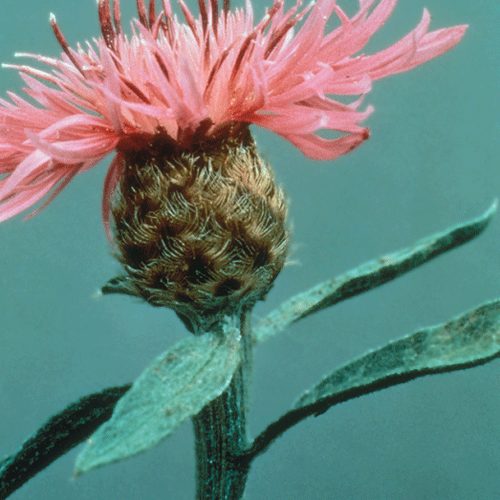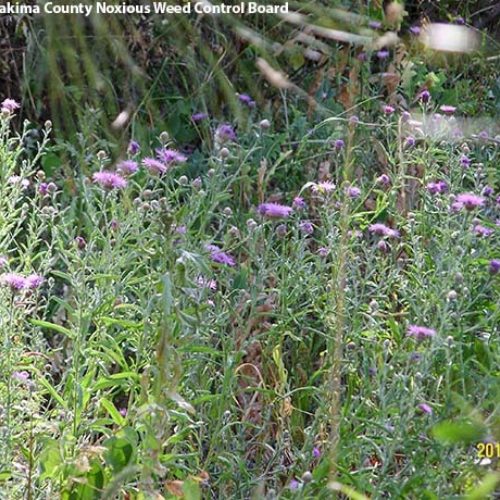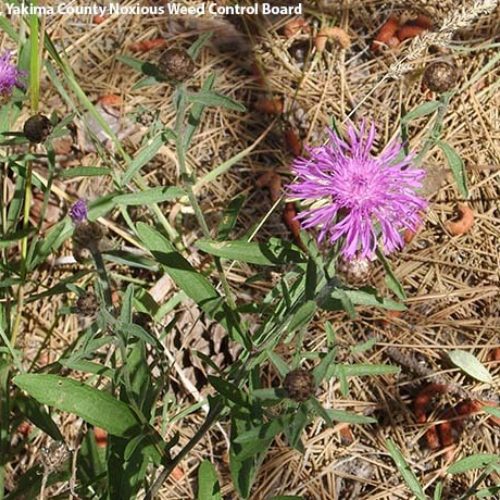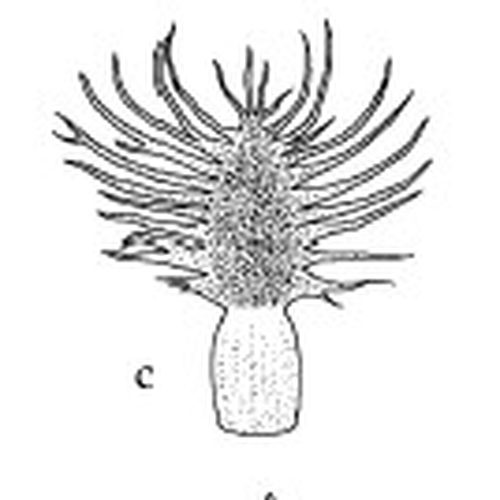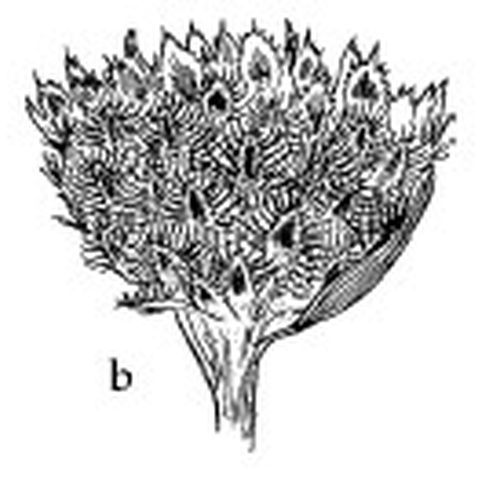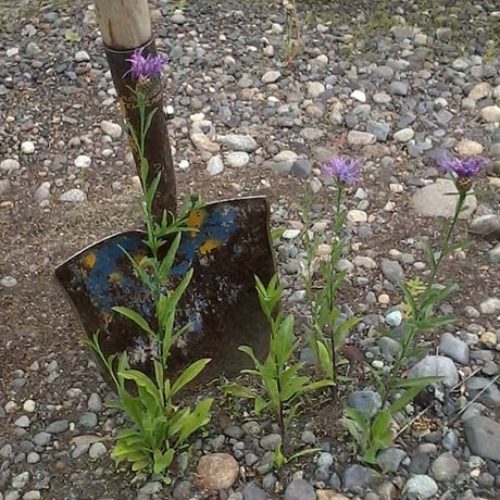Meadow Knapweed
Centaurea x moncktonii
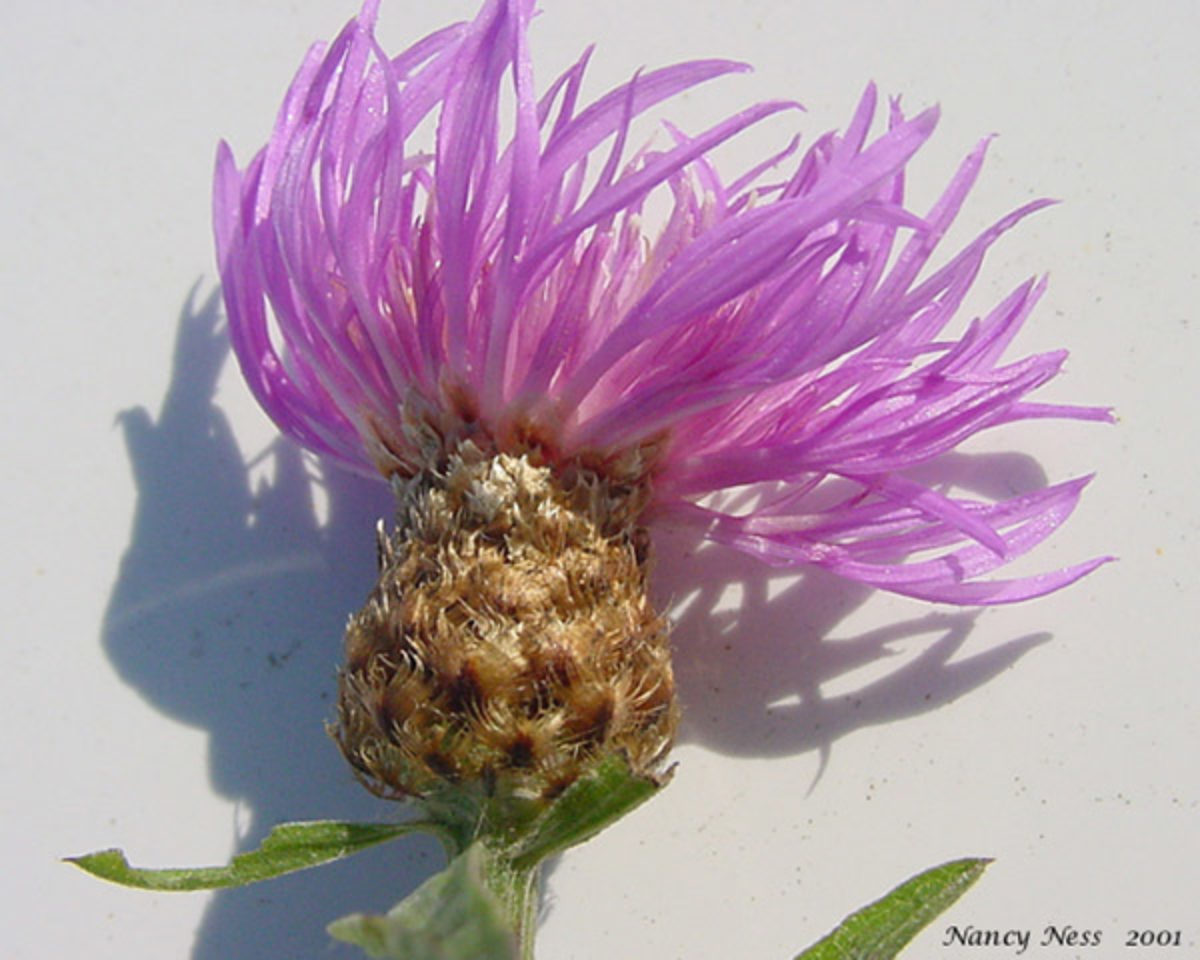
Family: Asteraceae
Other Scientific Names:
Centaurea x gerstlaueri, Centaurea jacea x nigra
Other Common Names: hybrid knapweed
Weed class: B
Year Listed: 1988
Native to: Europe
Is this Weed Toxic?:
not known to be
Legal listings:
This plant is also on the Washington State quarantine list. It is prohibited to transport, buy, sell, offer for sale, or distribute plants or plant parts of quarantined species into or within the state of Washington or to sell, offer for sale, or distribute seed packets of seed, flower seed blends, or wildflower mixes of quarantined species into or within the state of Washington. Please see WAC 16-752 for more information on the quarantine list. For questions about the quarantine list, contact the Washington State Department of Agriculture's Plant Services Program at (360) 902-1874 or email PlantServices@agr.wa.gov.
Why Is It a Noxious Weed?
Meadow knapweed is an aggressive invasive species that spreads into pastures and meadows. It outcompetes desirable forage plants as well as other native plants species.
How would I identify it?
General Description
As a hybrid between brown knapweed and black knapweed (Centaurea jacea and Centaurea nigra, and possibly Centaurea nigrescens), meadow knapweed can have variable characteristics between the parent plants. It is a perennial that typically grows between 1 and 5 feet tall.
Flower Description
Flower heads are solitary and terminal on branch tips. Bracts at the base of flower heads are light to dark brown and have papery, fringed margins. Bracts have a metallic gold sheen when plants are flowering. Flowers are rose purple to white.
Leaf description
Leaves not divided, up to 6 inches long and 1.25 inches wide with smooth or slightly lobed or toothed margins. Leaves decrease in size up the stem.
Fruit Seed Description
Seeds are white to light brown in color and may have a short row of hairs on one end.
May Be Confused With
Many species of Centaurea look very similar to each other, making identification difficult. If you need help with plant identification, please contact your county noxious weed coordinator.
Where does it grow?
Meadow knapweed occurs in mesic meadows and pastures, forest openings, roadsides, waste areas and floodplains of rivers and streams. Please click here to see a county level distribution map of meadow knapweed in Washington.
How Does it Reproduce?
Meadow knapweed reproduces from seed and also can respout from root crowns.
How Do I Control It?
Cultural Control
Frequent cultivation of areas should reduce and eliminate meadow knapweed populations. A fallow program prior to pasture reseeding should eliminate populations.
Biological Control
The blunt knapweed flower weevil, Larinus obtusus, is most destructive in the larval stage by its feeding on seeds within the flowerheads. The adults also cause damage by feeding on meadow knapweed leaves. For more information about the biological control of meadow knapweed, please visit WSU Extension Integrated Weed Control Project.
Herbicide Control
Please refer to the PNW Weed Management Handbook, or contact your county noxious weed coordinator.
For More Information
Selected Knapweeds of Washington Brochure
See our Written Findings for more information about meadow knapweed (Centaurea jacea x nigra)
Pierce County NWCB Fact Sheet on meadow knapweed
Clallam County NWCB Fact Sheet on meadow knapweed
Clark County NWCB Fact Sheet on meadow knapweed
Asotin County NWCB Fact Sheet on meadow knapweed
Jefferson County NWCB Fact Sheet on meadow knapweed
King County NWCB Fact Sheet on meadow knapweed
Whatcom County NWCB Fact Sheet on meadow knapweed
Cowlitz County NWCB Fact Sheet on meadow and spotted knapweed
Control Options for meadow knapweed from King County NWCB



